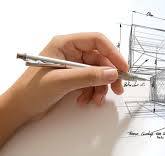Exploring the Intricacies of Architectural Design
The Art of Architecture Design
Architecture design is a captivating blend of art, science, and functionality. It is the art of creating spaces that not only serve a purpose but also evoke emotions and inspire awe. From towering skyscrapers to humble homes, architecture shapes the way we live, work, and interact with our surroundings.
The Role of Architecture in Society
Architects play a crucial role in shaping the built environment around us. They are tasked with designing structures that are not only visually appealing but also sustainable, efficient, and safe. Good architecture has the power to transform communities, improve quality of life, and create lasting landmarks that define a city’s identity.
The Principles of Architectural Design
Architectural design is guided by principles such as balance, proportion, scale, rhythm, and harmony. Architects carefully consider factors like site conditions, materials, cultural influences, and client needs to create buildings that are both functional and aesthetically pleasing.
Innovations in Architecture
With advancements in technology and materials, architects are pushing the boundaries of what is possible in design. From sustainable architecture that minimises environmental impact to parametric design that uses algorithms to create complex forms, the field of architecture is constantly evolving.
The Future of Architecture Design
As we look to the future, architecture will continue to play a vital role in addressing global challenges such as climate change, urbanisation, and social inequality. Architects will need to embrace new technologies, materials, and design approaches to create buildings that are not just beautiful but also resilient and adaptive.
Architecture design is an ever-evolving field that combines creativity with technical expertise to shape the world around us. Whether it’s a cutting-edge skyscraper or a sustainable community project, each architectural creation tells a story and leaves a lasting impact on society.
9 Essential Tips for Effective Architectural Design
- Consider the building’s purpose and function before starting the design process.
- Pay attention to natural light and ventilation to create a comfortable indoor environment.
- Incorporate sustainable and eco-friendly materials into your design for a more environmentally conscious approach.
- Focus on creating a harmonious relationship between indoor and outdoor spaces.
- Ensure that your design complies with local building regulations and codes.
- Think about the aesthetic appeal of the building while also prioritising functionality.
- Utilise technology such as Building Information Modelling (BIM) for more efficient design processes.
- Collaborate with other professionals like engineers and interior designers to enhance the overall design outcome.
- Continuously seek inspiration from various sources to keep your designs fresh and innovative.
Consider the building’s purpose and function before starting the design process.
When embarking on an architecture design project, it is vital to carefully consider the building’s purpose and function before delving into the design process. Understanding the intended use of the structure is paramount in creating a space that not only looks visually appealing but also serves its occupants efficiently and effectively. By prioritising the building’s function from the outset, architects can tailor their design decisions to meet the specific needs of the users, resulting in a harmonious blend of form and function in the final architectural creation.
Pay attention to natural light and ventilation to create a comfortable indoor environment.
When it comes to architecture design, paying attention to natural light and ventilation is essential for creating a comfortable indoor environment. Natural light not only illuminates a space but also enhances the overall ambience, making it feel more inviting and spacious. Proper ventilation helps regulate air quality and temperature, ensuring a healthy and pleasant atmosphere for occupants. By harnessing the power of natural light and ventilation, architects can design spaces that promote well-being, productivity, and sustainability.
Incorporate sustainable and eco-friendly materials into your design for a more environmentally conscious approach.
Incorporating sustainable and eco-friendly materials into your architectural design is a crucial step towards a more environmentally conscious approach. By choosing materials that are renewable, recyclable, or have a low carbon footprint, architects can reduce the environmental impact of their projects and contribute to a greener future. From using reclaimed wood and recycled steel to incorporating energy-efficient insulation and solar panels, embracing sustainable materials not only benefits the planet but also promotes healthier living spaces for occupants.
Focus on creating a harmonious relationship between indoor and outdoor spaces.
When approaching architecture design, it is essential to focus on creating a harmonious relationship between indoor and outdoor spaces. By seamlessly blending the boundaries between the interior and exterior environments, architects can enhance the overall experience of a building. Incorporating elements such as large windows, open courtyards, or green roofs not only allows natural light and ventilation to flow through the space but also connects occupants with the surrounding nature, creating a sense of unity and tranquillity within the built environment. This thoughtful integration of indoor and outdoor spaces can enrich the functionality, aesthetics, and well-being of those who inhabit the architectural structure.
Ensure that your design complies with local building regulations and codes.
It is essential to ensure that your architectural design complies with local building regulations and codes. Adhering to these guidelines not only ensures the safety and structural integrity of the building but also helps in obtaining necessary permits for construction. By following local regulations, architects can create designs that meet legal requirements while still embodying their creative vision, ultimately contributing to the overall well-being of the community and environment.
Think about the aesthetic appeal of the building while also prioritising functionality.
When approaching architecture design, it is essential to strike a balance between aesthetic appeal and functionality. While the visual impact of a building is crucial in creating a memorable and striking structure, it is equally important to prioritise functionality to ensure that the space serves its intended purpose efficiently. By carefully considering both aspects during the design process, architects can create buildings that not only look visually stunning but also provide practical and comfortable spaces for occupants to live, work, or interact within.
Utilise technology such as Building Information Modelling (BIM) for more efficient design processes.
By utilising technology such as Building Information Modelling (BIM), architects can streamline and enhance their design processes significantly. BIM allows for the creation of detailed 3D models that integrate all aspects of a building’s design, from its structure to its systems and materials. This technological tool not only improves collaboration among project stakeholders but also enables better decision-making, reduces errors, and enhances overall efficiency in the architectural design process. Embracing BIM can lead to more sustainable, cost-effective, and innovative architectural solutions that meet the evolving needs of modern society.
Collaborate with other professionals like engineers and interior designers to enhance the overall design outcome.
Collaborating with other professionals such as engineers and interior designers is essential in architecture design to elevate the overall outcome of a project. By working together, architects can leverage the expertise of different disciplines to ensure that the design not only looks visually stunning but also functions efficiently and meets all structural requirements. Engineers bring their technical knowledge to the table, ensuring that the building is structurally sound, while interior designers focus on creating spaces that are aesthetically pleasing and functional for occupants. This collaborative approach results in a holistic design that seamlessly integrates form and function, enhancing the overall quality of the architectural project.
Continuously seek inspiration from various sources to keep your designs fresh and innovative.
To excel in architecture design, it is essential to continually seek inspiration from a diverse range of sources. By exploring different art forms, cultures, and technologies, architects can infuse their designs with fresh perspectives and innovative ideas. Drawing inspiration from various sources not only enriches the creative process but also ensures that designs remain dynamic and relevant in an ever-changing world of architecture.


